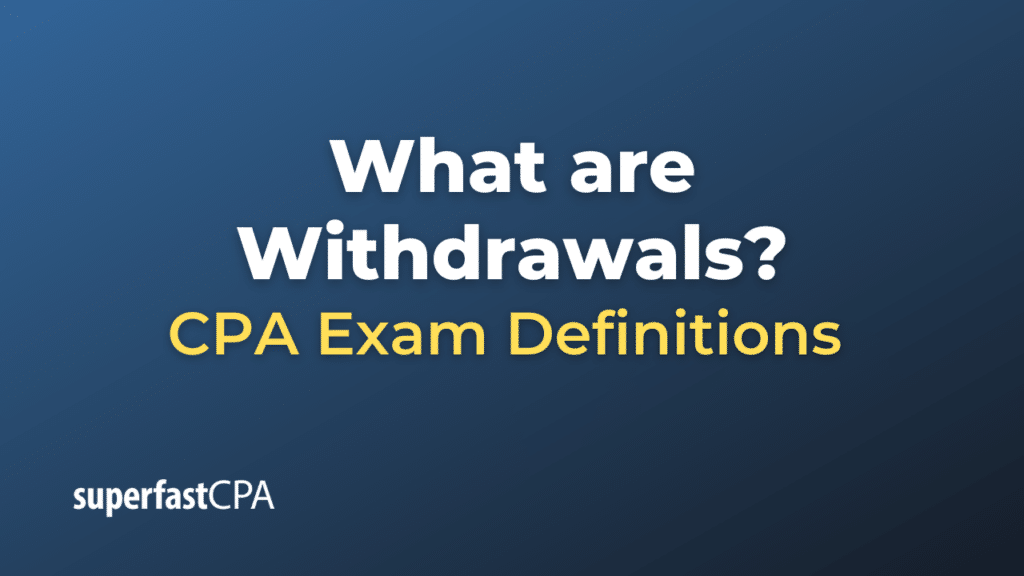Withdrawals
In accounting, “withdrawals” typically refer to the distribution of cash or other assets from a business to its owners or partners. This term is commonly used in the context of sole proprietorships and partnerships, where the business and the owner(s) are not legally separate entities. These withdrawals are also known as “draws” and represent the owner’s share of the profits, or they could be a return of capital.
Withdrawals are not considered business expenses and do not appear on the income statement. Instead, they are accounted for in the equity section of the balance sheet and reduce the owner’s equity in the business. Here’s how it works:
In Financial Statements:
- Balance Sheet: The Owner’s Equity section will now show a reduced equity figure, and the cash or other asset account will also decrease.
- Statement of Owner’s Equity: The withdrawal will be shown as a line item reducing the owner’s equity.
- Cash Flow Statement: If the business prepares a cash flow statement, the withdrawal is usually shown under “financing activities” as an outflow of cash.
In a corporate setting, distributions to shareholders are not usually called “withdrawals”; they are typically referred to as dividends and are treated differently for accounting and tax purposes.
Example of Withdrawals
Certainly! Let’s consider a simple example to illustrate withdrawals in accounting.
- Business: Sarah’s Bookstore, a sole proprietorship
- Owner: Sarah
- Initial Owner’s Equity: $20,000
- Initial Cash in Bank: $20,000
- Withdrawal Amount: $5,000 for personal use
Accounting Entries:
When Sarah withdraws $5,000 from the business for personal use, the accounting entries would look like this:
Journal Entry
- Decrease in Cash (Asset Account):
- Debit: Cash (decreased by $5,000)
- Decrease in Owner’s Equity (Equity Account):
- Credit: Sarah’s Drawings (increased by $5,000)
The journal entry would look like this:
Debit: Cash $5,000
Credit: Sarah's Drawings $5,000Impact on Financial Statements:
Balance Sheet
Before the withdrawal:
- Assets: $20,000 (Cash)
- Liabilities: $0
- Owner’s Equity: $20,000
After the withdrawal:
- Assets: $15,000 (Cash)
- Liabilities: $0
- Owner’s Equity: $15,000
Statement of Owner’s Equity
- Initial Owner’s Equity: $20,000
- Less: Withdrawal: $5,000
- Ending Owner’s Equity: $15,000
Cash Flow Statement
Under the section “Financing Activities”:
- Cash outflow due to Owner’s Drawings: $5,000
In this example, Sarah’s $5,000 withdrawal results in a decrease in both the Cash and Owner’s Equity accounts, thus maintaining the accounting equation:
- Assets = Liabilities + Owner’s Equity
- $15,000 = $0 + $15,000
By accounting for the withdrawal in this way, Sarah keeps her financial records accurate and in compliance with accounting principles.













